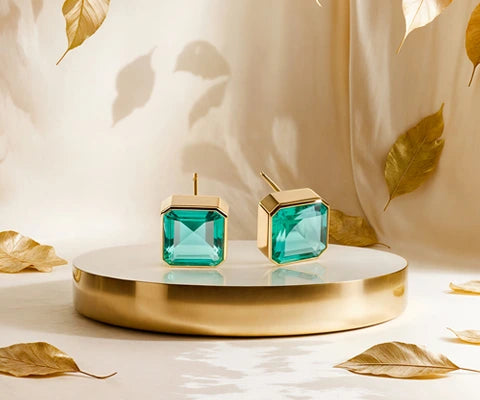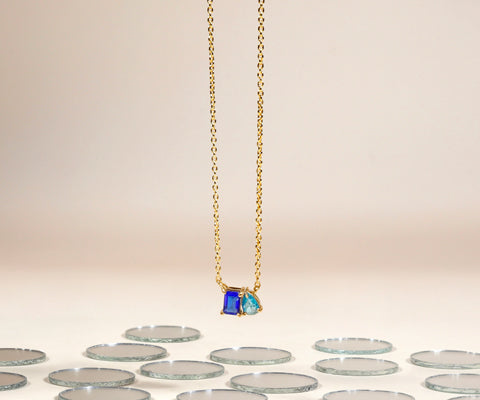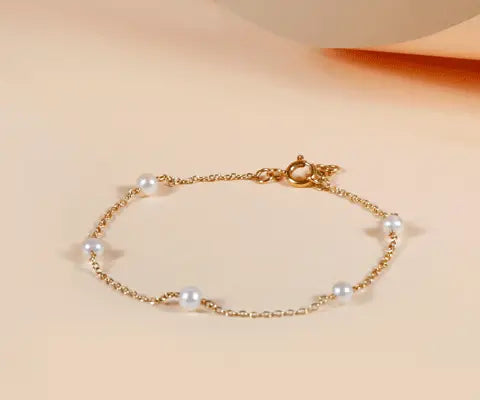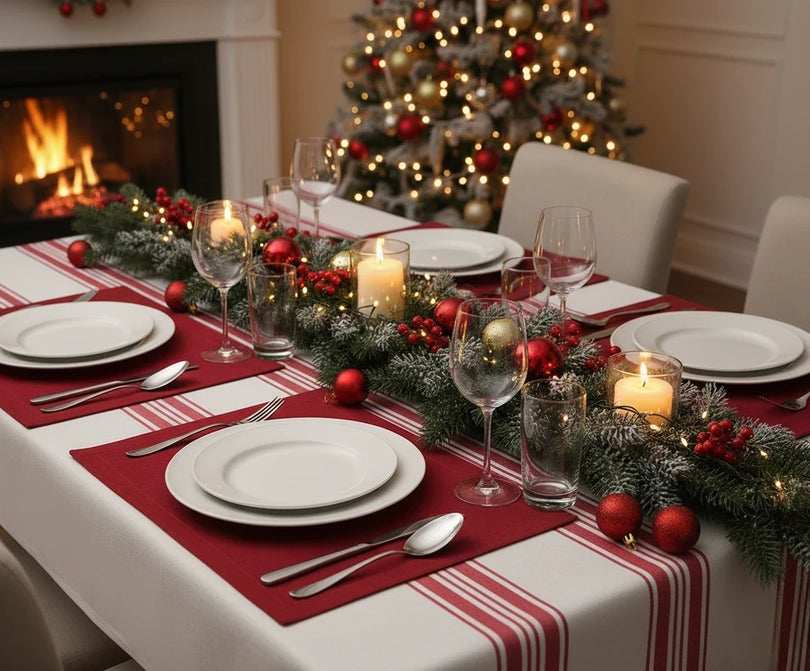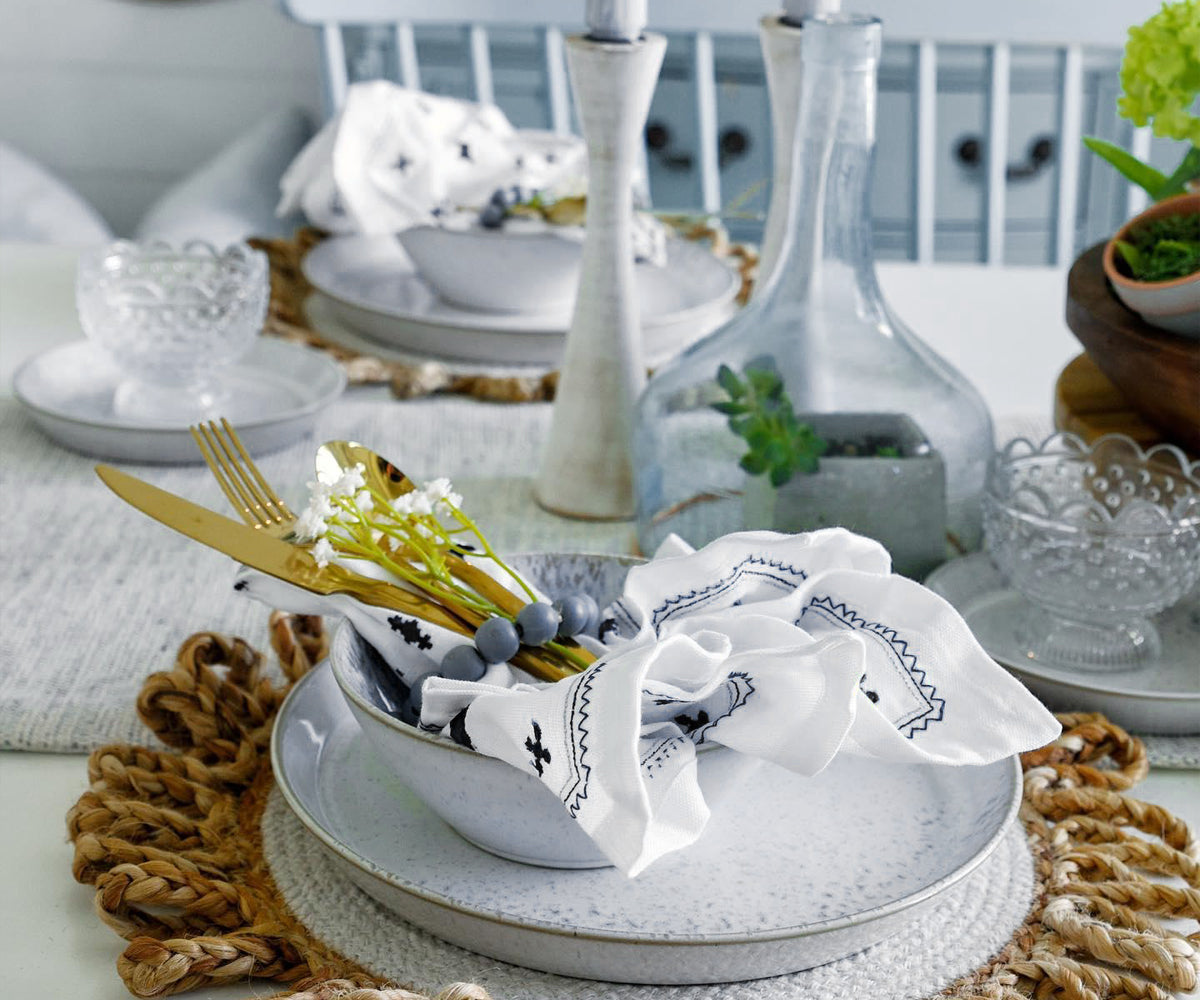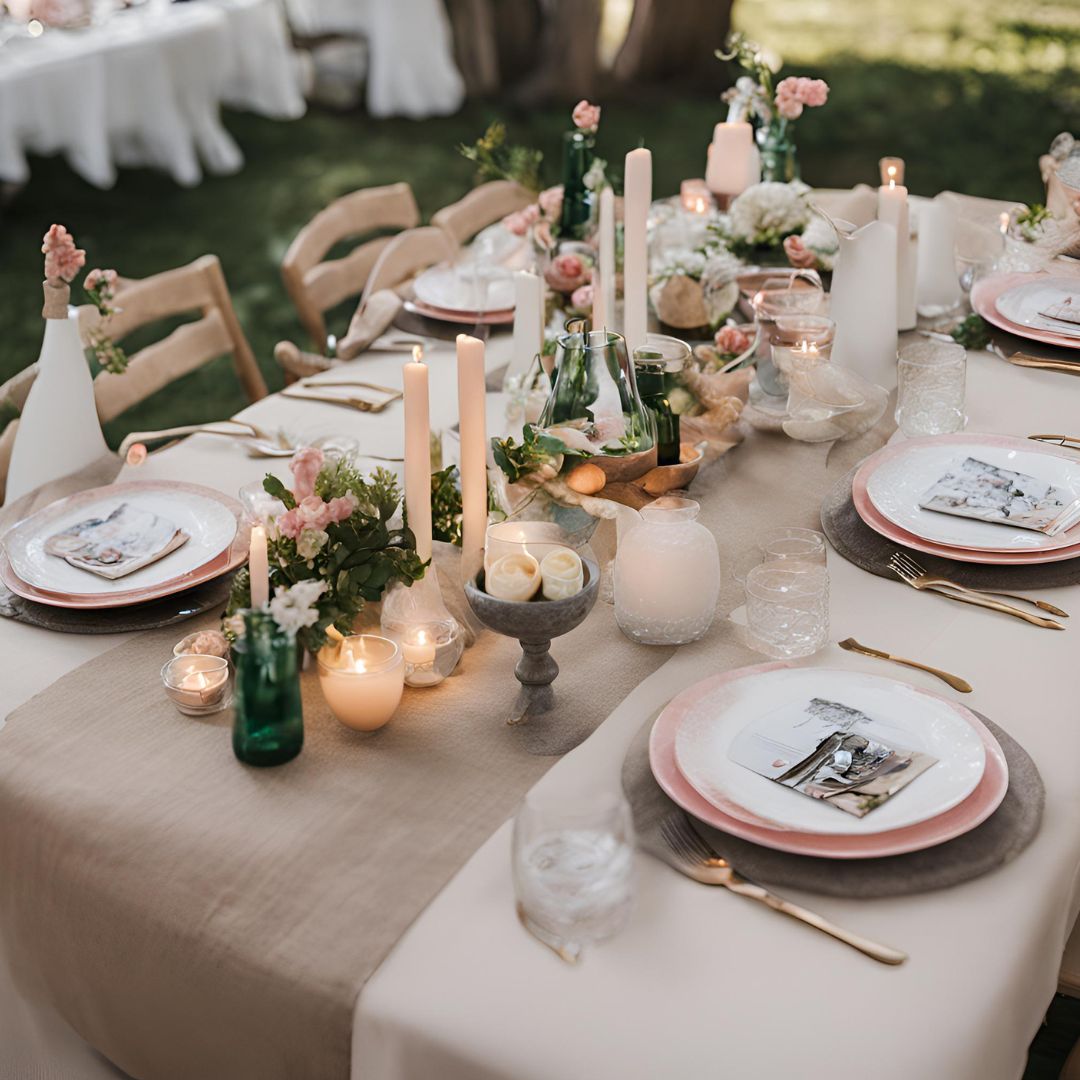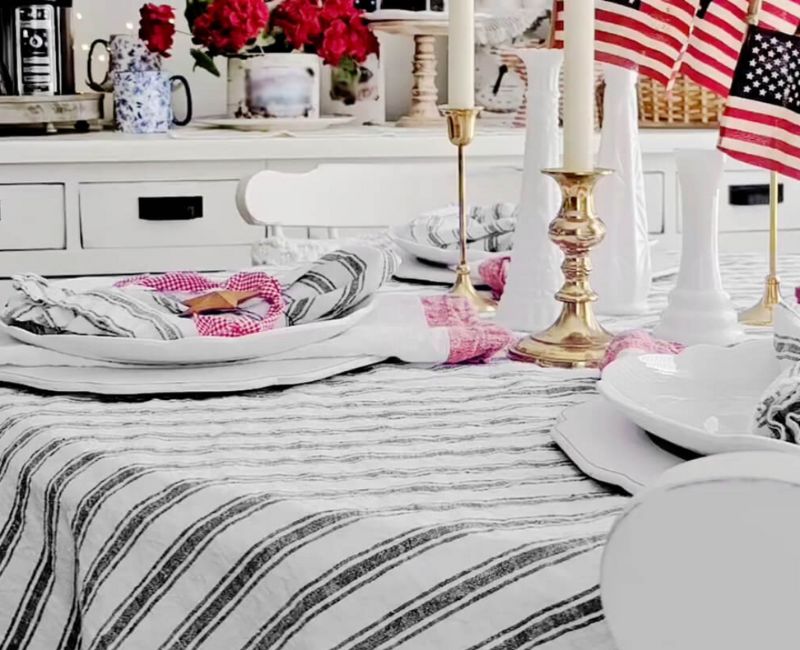Setting a table, even for an informal meal, can be a blend of tradition and personal style. Among the essential elements of table setting, the placement of napkins often sparks debate. Is there a right or wrong way to do it? Should the napkin go to the left or the right of the plate?
Understanding the basics of napkin placement, as well as how to incorporate different types of napkins like linen napkins, cotton cloth napkins, and even embroidered napkins, can enhance the overall dining experience. Let's explore this topic in detail, covering both the traditional rules and the flexibility you can apply for various occasions.
Traditional Napkin Placement: The Left Side Wins
In informal dining settings, the most accepted and traditional placement for a linen table napkin is to the left of the plate. This positioning is rooted in both practicality and tradition. Since the majority of people are right-handed, the left placement allows guests to easily reach for the napkin with their non-dominant hand while handling utensils with their dominant hand.
For example, if you’re setting up a casual dinner table with white linen napkins or floral cloth napkins, placing them to the left ensures consistency and symmetry across the table. The same goes for more colorful options, such as pink cloth napkins or green napkins, which can add a vibrant touch to your table while maintaining the traditional left-side placement.
The Case for Right-Side Placement
Although placing napkins on the left is traditional, there are instances where placing the napkin to the right of the plate might be more suitable. This is particularly true in more casual or space-constrained settings, where the right placement can offer greater convenience. For instance, if your table is crowded with dishes and decorations, placing linen napkins or cotton napkins on the right might make the table look less cluttered and more accessible for your guests.
Moreover, at a buffet or when serving a large number of guests, placing fabric napkins on the right side or even on top of the plate can facilitate easier access, allowing guests to grab their napkin before reaching for their utensils. This is especially useful if you’re hosting a large informal gathering where guests serve themselves and sit down as they please.
Napkin Placement on Top of the Plate
Another popular option, particularly in more creative or decorative settings, is to place the napkin directly on top of the plate. This is common in both formal and informal settings and is often seen at weddings or holiday dinners where the napkin serves as both a functional item and a decorative element.
When using embroidered napkins, luxury table linens, or linen cocktail napkins, placing the napkin on top of the plate can showcase the design, adding an elegant touch to the overall table setting. For example, at a Christmas dinner, Christmas cloth napkins folded neatly on top of each plate can enhance the festive ambiance. Similarly, thanksgiving cloth napkins with autumnal hues or designs can bring warmth and style to your Thanksgiving table.
Material Matters: Choosing the Right Napkin for Your Setting
The type of napkin you choose can influence not just its placement but also the overall tone of your dining experience. Let’s take a closer look at different napkin materials and how they can be used effectively in various settings.
Linen Napkins
Linen napkins are a favorite for those who appreciate classic elegance. These napkins are durable, absorbent, and add a touch of luxury to any meal. White linen napkins are particularly versatile, fitting seamlessly into both casual and formal settings. Whether placed to the left of the plate, on top, or even inside a glass, white fabric napkins are a timeless choice that elevates the dining experience.
For a modern twist, black napkins in linen can create a striking contrast against lighter tableware, making them a popular choice for contemporary and minimalist table settings. The richness of black cloth napkins also works well in evening dinners or black-tie events.
Cotton Cloth Dinner Napkins
Cotton Cloth Dinner napkins are another excellent option, especially for informal settings. They are soft, absorbent, and easy to care for, making them ideal for everyday use. Available in a wide range of colors, from pink napkins to green cloth napkins, cotton napkins can be matched to any theme or occasion.
Red cloth napkins, for instance, are perfect for holiday dinners, such as Christmas or Valentine’s Day, adding a bold splash of color to your table.
Blue napkins can evoke a sense of calm and are great for summer gatherings or nautical-themed dinners. Whatever the color, placing these napkins to the left of the plate or using them as a central decorative element on the plate can enhance your table’s visual appeal.
Fabric Napkins in Bulk
For those who frequently host large gatherings, buying fabric napkins in bulk is both practical and cost-effective. Having a consistent set of napkins, whether they are floral cloth napkins or plain cotton napkins, ensures that your table setting looks uniform and polished.
Bulk fabric napkins are also a smart choice for weddings, where matching the napkins to the overall color scheme is essential. Napkins for weddings, particularly personalized napkins or custom napkins, can be a memorable detail that adds a personal touch to the event.
Napkin Placement for Special Occasions
While the traditional placement of napkins to the left of the plate is standard for informal meals, special occasions allow for more creativity. For events such as weddings, holidays, or cocktail parties, napkin placement can be more flexible, often depending on the theme and formality of the event.
Weddings
For weddings, napkin placement becomes part of the décor. Napkins for weddings are often folded and placed either on the plate or in an elaborate arrangement on the table. Whether you choose white cloth napkins for a classic look or black cloth napkins for a more contemporary feel, napkins should match the overall theme of the wedding. Personalized or embroidered napkins can also be used to add a bespoke touch, making the event more memorable.
Holiday Gatherings
During the holidays, napkins play an important role in creating a festive atmosphere. Christmas cloth napkins and thanksgiving cloth napkins should be chosen to complement your holiday décor. Red, green, and gold are popular color choices for Christmas, while warm earthy tones are ideal for Thanksgiving. Napkins can be placed on the plate, folded into holiday-themed shapes, or tied with decorative ribbons for added flair.
Creative and Placement Ideas
Once you've chosen the perfect napkins for your table, consider how you can fold and display them to add a unique flair to your setting. Here are a few ideas:
-
Classic Fold: Simply fold the napkin into a rectangle or square and place it to the left of the plate. This works well with cotton cloth napkins and linen napkins, especially in solid colors like white napkins or black napkins.
-
Fan Fold: For a more decorative approach, fold the napkin into a fan shape and place it on top of the plate. This is particularly effective with embroidered napkins or luxury table linens, where the design can be showcased.
-
Roll and Tie: Roll the napkin and secure it with a ribbon or napkin ring. This method is versatile and can be used with floral cloth napkins or thanksgiving cloth napkins to add a seasonal touch.
-
Glass Insertion: For cocktail parties or more casual settings, place the napkin inside the glass. Linen cocktail napkins or cloth cocktail napkins work best for this, creating a sophisticated presentation.
Practical Care for Your Napkins
Maintaining the quality of your napkins is crucial, especially if you plan to reuse them for multiple occasions. Here are some tips:
-
Washing: Always follow the care instructions on the label. Linen napkins and cotton napkins should be washed in cold water to prevent shrinkage. Black cloth napkins and other dark colors should be washed separately to avoid color bleeding.
-
Ironing: For a crisp, clean look, iron your napkins while they are slightly damp. This is particularly important for white linen napkins or luxury table linens that you want to keep looking pristine.
-
Storing: Store your napkins in a dry, cool place. Avoid tight folding that might cause creases. For embroidered napkins, consider storing them flat or rolled to protect the delicate stitching.
Conclusion: The Versatility of Napkin Placement
In summary, the traditional placement of napkins to the left of the plate remains a popular choice for informal settings, offering a blend of practicality and elegance. However, depending on the occasion and the style of napkins you’re using whether linen napkins, cotton napkins, or embroidered napkins there’s room for creativity and flexibility. From weddings and holidays to everyday meals, the way you place and present your napkins can enhance the overall dining experience, making your table setting memorable and inviting.
By understanding the nuances of napkin placement and incorporating high-quality fabric napkins from All Cotton and Linen into your table décor, you can create a setting that is not only functional but also a reflection of your personal style. Whether it’s a casual family dinner or a festive holiday gathering, the right napkin, placed thoughtfully, can truly elevate your table and delight your guests.


